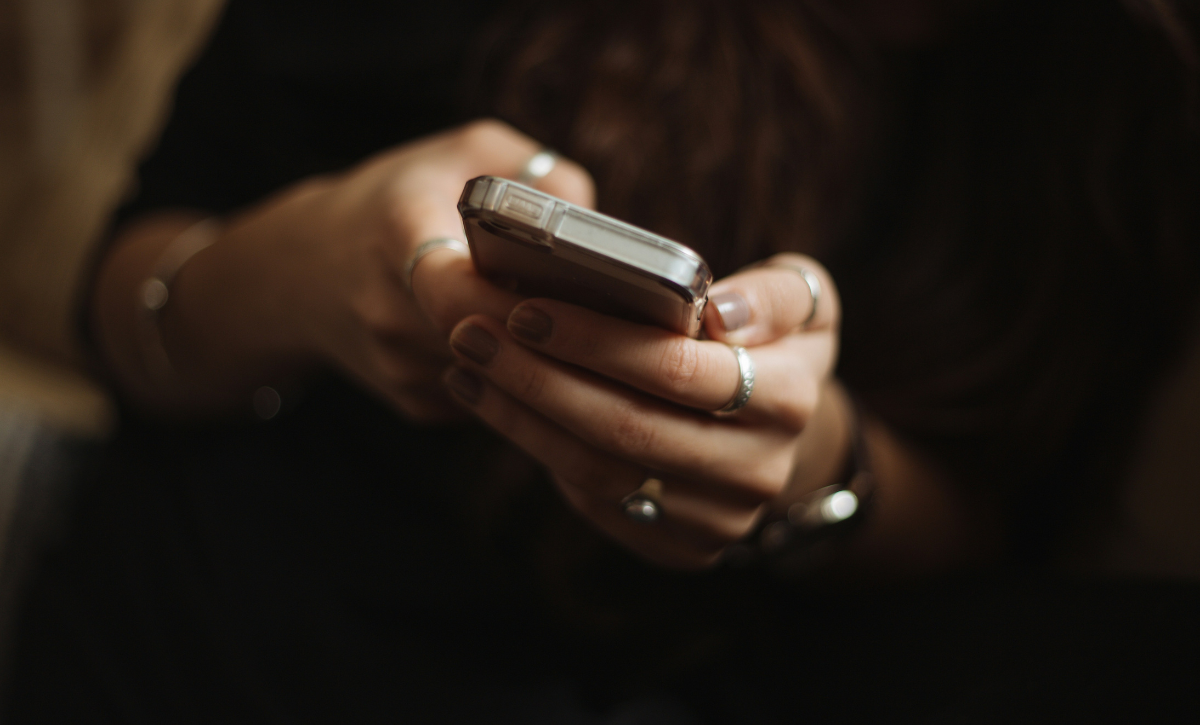June 11, 2019
How to Get Started Calling and Texting Over WiFi

Calling and texting over WiFi refers to phone calls and/or texts placed over an internet connection, instead of a cellular network.
If you think that sounds too good to be true, get ready to be surprised! Let’s explore how WiFi calling/texting works, the pros and cons, and why you may want to consider it for your own calling needs.
The history of WiFi calls and texts
People have been trying to figure out how to use the internet for phone calls since it was invented. And why not? If you can send an email, you should be able to place a phone call over WiFi.
Wifi calls/texts go through the web instead of over cell networks. This is a fantastic choice if you do not have active cellular service, or are far from cell towers.
It’s never been easier to connect to free WiFi. Public locations with WiFi are known as “hotspots” and are prominent all over the world. It’s also possible to buy a personal WiFi hotspot to bring with you during travel! This ensures you’re always connected, even if you don’t have cellular coverage in your area. You can just find a place that offers free internet access to get started. Find your local Starbucks or Mcdonald’s wifi, connect, and you’re good to go!
You can also use WiFi calling/texting by connecting to wireless data, if available. Wireless data is included on many phone plans with your cellular service provider, so you may already have this option.
WiFi calling and text messaging has been growing in popularity for years, especially among students, travelers, and people living in areas with poor cellular coverage. It’s also a great way to save money on long-distance calls or cut down your monthly cell phone fees, since it bypasses the cell network entirely. Both voice calls and text messages over WiFi are increasingly common.
What are the pros and cons of WiFi calling/texting?
PROS:
It’s free!
No expensive cellular plan needed! You can use WiFi calling and messaging any time that your phone has a steady WiFi signal. You can do so without a cellular connection, so even if your phone is not able to make regular calls, you can WiFi call/text as long as you have the internet. This allows you to bypass expensive cell phone plans. When it comes to cost, you can’t beat free!
Better reception
Using WiFi is a great choice if you are in a location with bad cell reception. You can skip the cell network entirely and use the internet to connect to your loved ones! This is key if you are located in an area with poor cellular network coverage, such as a rural location.
Great for travel
With the prevalence of WiFi hotspots worldwide, chances are you can find WiFi nearby. Restaurants like McDonalds and Starbucks commonly have WiFi networks available. So does the Apple Store, and most hotels. This makes it a fantastic option for travelers who may want to avoid costly out-of-network cellular fees.
Cons:
Mobile data and roaming fees
You’ll want to keep an eye on your WiFi signal. If your connection drops, then your phone may switch over to your cellular data plan. This can be a costly mistake since data charges add up quickly. Luckily it’s easy to avoid this by turning off your wireless data — if you’re traveling, you probably do this anyway by default.
Weak signal strength
Remember how we said that calling over Wifi offers better reception? That only applies if you have stable WiFi. So the hotspot in your hotel should be fine, but maybe not the overcrowded network at the local train station. If the WiFi is so bad that you can’t even get Facebook to load, then you’re probably not going to make a WiFi call. A text, however, may work on a less stable connection. You also don’t need super fast internet speeds. Approximately 1Mbps is all you need for WiFi messages or calls to go through!
Not available on all carriers
Some carriers will ding you for using WiFi to call, or even count it against your included coverage minutes. Sprint , for example, says that “Wi-Fi calling is a free service when calling to a US, US Virgin Islands, or Puerto Rico number.” But international long-distance will cost extra. T-mobile will charge your regular calling plan for WiFi calls if you make the calls through your regular phone number (unless you have an unlimited plan with them already). Make sure to check out what your carrier allows before getting started.
What kind of phone do I have? Is my device supported?
Placing calls over WiFi depends on your device. Every iPhone since the 5S model supports this function. If you’re familiar with FaceTime, that’s also essentially a kind of phonecall made over WiFi. For Android devices, it’s a bit more complicated. The instructions to enable WiFi calling will be slightly different on every model of the device.
The following models of devices have WiFi calling capabilities:
- Samsung Galaxy S9, S9+, S8, S8+, S7, S7 edge, S6, S6 edge, S6 edge+, A3, A5, Note 8.
- Google Pixel, Pixel XL, Pixel 2, Pixel 2 XL
- iPhone X, iPhone XS, iPhone XS Max, iPhone XR, iPhone 8, iPhone 8+, iPhone 7, iPhone 7+, iPhone 6S, iPhone 6S+, iPhone 6, 6+, iPhone SE, Apple Watch Series 3 LTE, and Apple Watch Series 4 LTE
How to enable WiFi calling for iPhone
Navigate to “Settings.” From there, select “Phone,” then choose “Wi-Fi Calling.”
How to enable WiFi calling for Android
Navigate to Settings, then choose “Wireless ” and then select “More Settings.” Select “Wi-Fi Calling” and enable that setting. These instructions may differ slightly on various models of Android.
Using a mobile app for calling and texting over Wifi
If the idea of accidentally defaulting to cellular networks and getting charged by your carrier makes you hesitate, you’re in luck! One simple way to get set up with WiFi is to skip the enabling step entirely and download a convenient mobile app instead.
Skype, Google Hangouts, and Facebook Messenger are the most popular WiFi calling/messaging apps. There are however major drawbacks to these apps: for the WiFi call to entirely avoid the cell network, both sides of the call need to be using the app in question. So if you get Google Hangouts to make a call, the person you are contacting also needs to be on Hangouts for it to work.
Hushed, on the other hand, is an app that allows calls and texts to be made over the internet and does not require both parties to be on the app. It can be downloaded here for both iOS or Android With Hushed, you do not have to worry about accidentally using your cellular network and being charged by Sprint, Verizon, T-mobile, or any other carrier.
All calls/texts are placed through the app, and if you are using WiFi and not mobile data, your calls route automatically through the internet. Your text message, likewise, appears as a normal SMS text message. The person you are calling/texting with does not even need to be using Hushed! Their side of the conversation can use a regular cell network, while your side of the connection uses WiFi.
Whichever method you decide to use, we’re convinced that WiFi is the future for mobile calls and texts!


